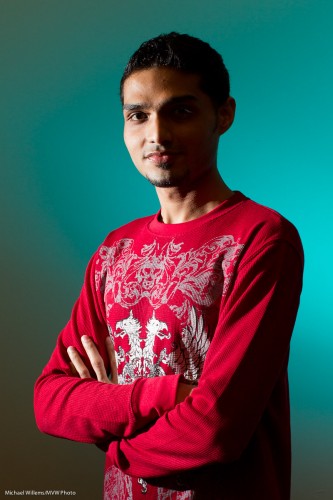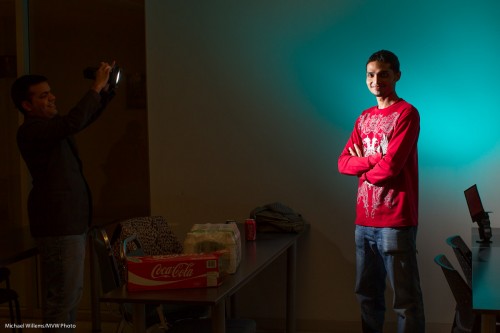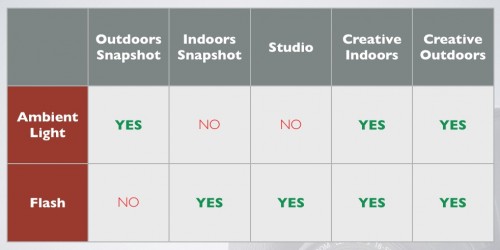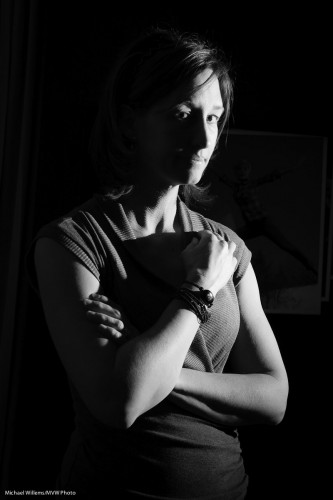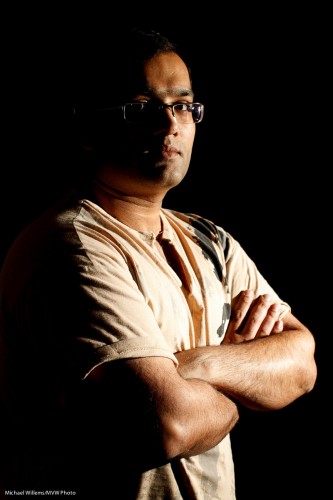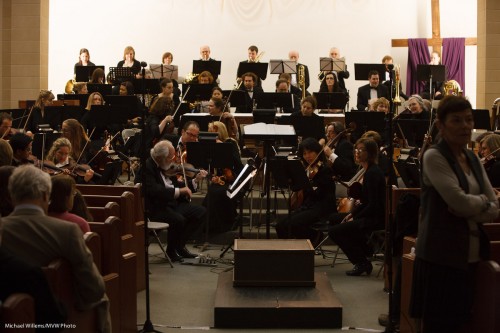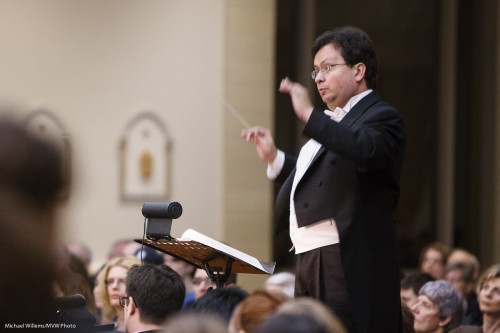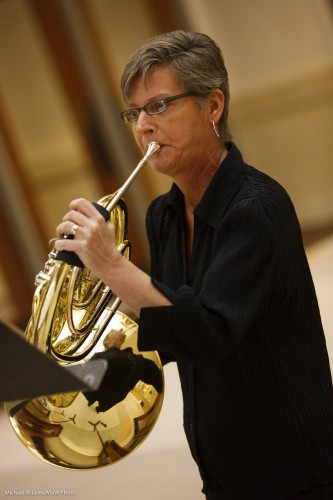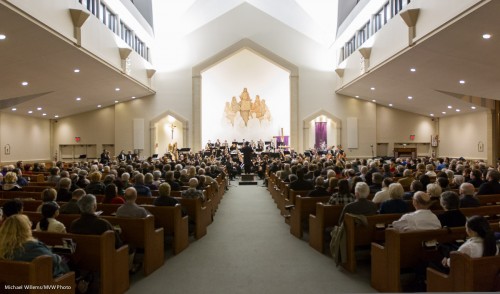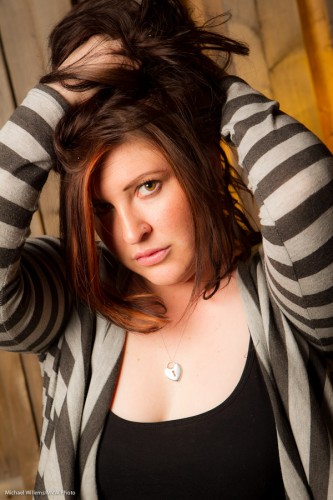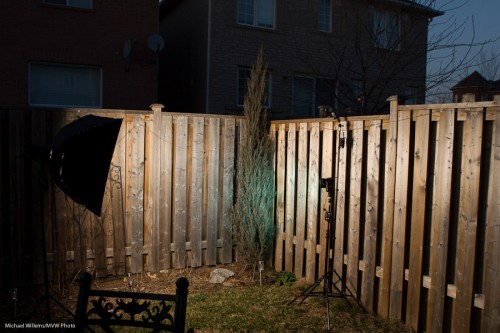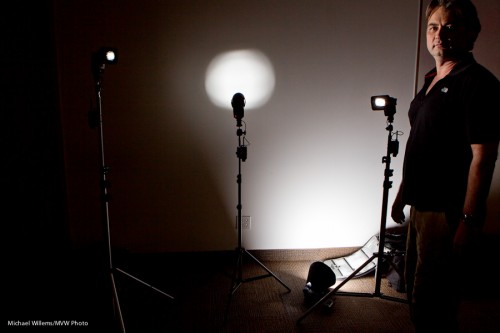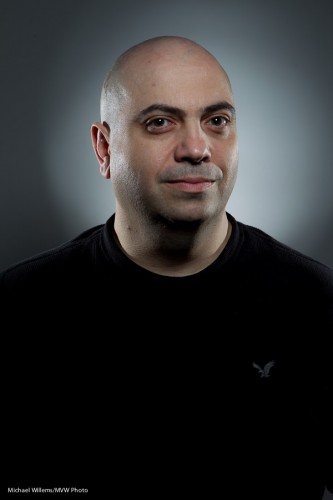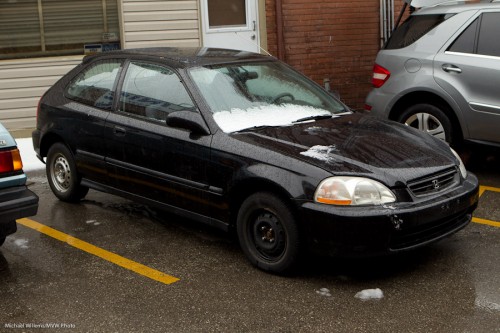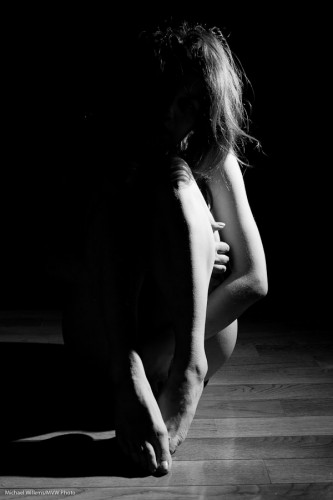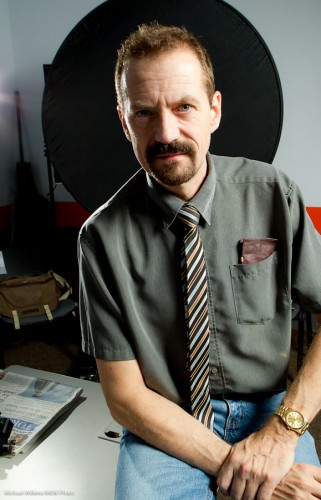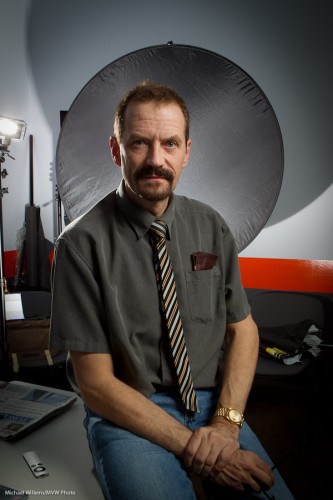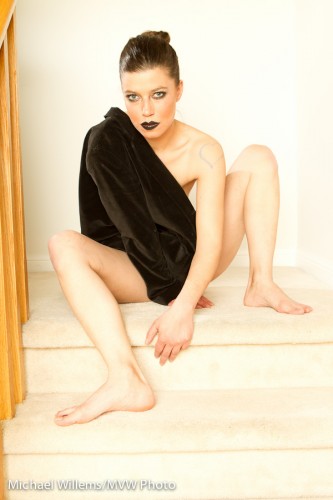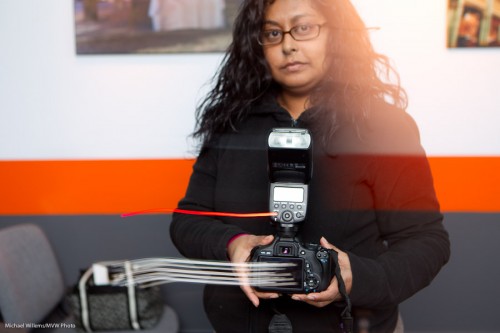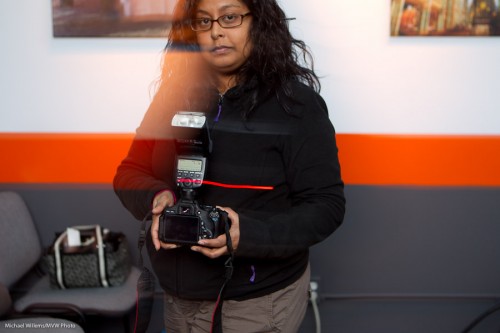Here’s student Brittney, in a Seneca College workshop I did the other night:
Again: simple light: one off camera flash.
- From yesterday’s post you will remember that I first thought about the background, then about the flash. In this case I set my camera (in manual exposure mode of course) to give me a very dark background. I wanted no ambient light.
- And yes, you can use direct flash. I had a honl photo grid on a 430EX flash, driven by the camera’s 580EX.
- The 580EX was disabled from contributing to the actual shot: all it did was fire commands.
Another student – and here I added a background light too:
How did I do that?
TIP: always do a “pull-back shot”, where you see your setup.
As you see, here I asked a student to hold the gridded main flash; then I used a second flash with a gel and, to prevent the color from hitting the subject or shining into my camera, a flag (a gobo – “go between objects” – the Honl bounce cards are also gobos/flags.


